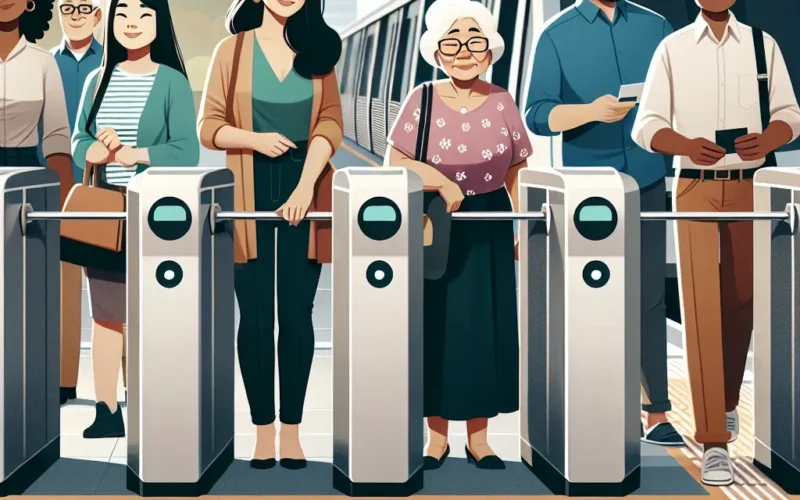Introduction
In an unexpected turn of events, Bay Area commuters recently found themselves riding for free due to a significant outage affecting the Clipper card system. This situation has sparked a mix of reactions among daily passengers who typically rely on this crucial transit card for their journeys. In this article, we delve into the details surrounding the Clipper card outage, its historical significance, the implications for commuters, and what this could mean for the future of public transportation in the Bay Area.
The Clipper Card System: A Brief Overview
The Clipper card is an electronic fare payment system that has been integral to the Bay Area’s public transportation network since its launch in 2010. Designed to streamline the payment process across various transit agencies, it allows users to load value digitally and use the card across multiple transport modes, including buses, trains, and ferries. The convenience of the Clipper card has contributed to its widespread adoption, making it a staple for commuters in the region.
Historical Context of the Clipper Card
Initially developed to unify fare payment across the various transit systems, the Clipper card was a significant advancement in public transportation technology. Its introduction represented a shift towards modernization in transit systems, reducing the need for cash transactions and paper tickets. Over the years, the card has undergone several upgrades, enhancing its functionality and user experience.
The Recent Outage: What Happened?
In late October 2023, users began experiencing issues with the Clipper card system, which led to widespread outages across all participating transit agencies. Commuters were unable to load funds onto their cards or access their accounts, leading to confusion and frustration. In response to the outage, transit authorities made an unprecedented decision to allow passengers to travel for free during this period, giving riders a rare opportunity to catch a break amid rising transportation costs.
Immediate Responses from Transit Authorities
Transit officials quickly communicated their decision to allow free rides, emphasizing their commitment to maintaining access to public transportation during the outage. This response was largely seen as a necessity to ensure that commuters could continue to travel without disruption, especially for those who depend on public transport for work and daily responsibilities.
Implications for Commuters
The decision to allow free rides amid the Clipper card outage has had several implications for commuters:
- Cost Savings: Many commuters welcomed the temporary relief from fare costs, especially in an era where transportation expenses can strain budgets.
- Increased Ridership: The free rides likely encouraged more people to utilize public transportation, potentially leading to overcrowding on some routes.
- Strain on Transit Systems: Allowing free rides may have placed additional strain on transit systems already dealing with operational challenges.
The Broader Impact on Public Transportation
While the free rides provided immediate relief for commuters, they also raised questions about the reliability and resilience of public transportation systems. The outage highlighted the vulnerabilities that come with relying heavily on technology for essential services. As transit agencies look to the future, there is a pressing need for increased investments in infrastructure and backup systems to prevent similar incidents from occurring.
Future Predictions for Clipper Card and Public Transit
Looking ahead, several trends may shape the future of the Clipper card system and public transportation in the Bay Area:
- Increased Investment in Technology: Transit agencies may prioritize investments in more robust technology to enhance system reliability.
- Integration of Alternative Payment Systems: The future may see the integration of more flexible payment options, such as mobile wallets and contactless payments, to provide users with additional convenience.
- Focus on Sustainability: As more people return to public transport, agencies are likely to promote environmentally friendly practices and technologies.
Commuter Perspectives
To gain a better understanding of the impact of the Clipper card outage, we reached out to several Bay Area commuters to share their experiences:
Anecdotes from the Ground
One commuter, Sarah, who relies on the BART system for her daily commute, expressed her relief at being able to travel for free during the outage. “It was a nice surprise,” she said. “With rising costs everywhere, it felt good to save some money, even if it was just for a few days.”
Conversely, John, another commuter, shared his frustrations about the outage. “I had plans to load more money onto my Clipper card for the week, but the outage really disrupted my routine. I hope they can fix these issues permanently.”
Expert Opinions
Transit experts have weighed in on the situation, emphasizing the need for systems to be resilient against such technical failures. “Public transportation is only as strong as its technology,” noted Dr. Emily Torres, a public transit researcher. “Investing in reliable infrastructure and backup systems is a must to ensure that commuters have uninterrupted access.”
Conclusion
As the dust settles from the recent Clipper card outage, the Bay Area’s commuters are left reflecting on the importance of reliable public transportation. The free rides provided a much-needed respite from the financial strain of transit fees, but they also exposed the vulnerabilities that lie within the system. Moving forward, it is essential for transit authorities to learn from this experience, investing in stronger technology and infrastructure to ensure that all commuters can travel without disruption.
In the end, the Clipper card outage serves as a reminder of the intricate relationship between technology and public transportation and its profound impact on the lives of commuters throughout the Bay Area.

